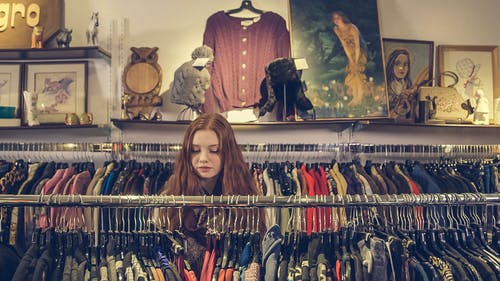Introduction
Despite all of the paradigm-shifting events that have shaped the fashion industry in the latest years trends show that physical retail is anything but dead. On the contrary effective management of a physical retail store is key to the success of your fashion brand. With so much action happening on the online retail space, we may tend to believe that physical stores have become unnecessary, but far from it, a retail location can allow your brand to access a totally new sphere of interactions with customers.
Physical stores, in fact, can be better understood and managed once we focus on the simple priorities that store managers have in mind to convert visitors into customers.
- The first goal of a physical retail store is to attract customers. This is key, as with no visitors there are no sales.
- The second goal is to make sure customers find the merchandise they are looking for. This might seem simple, but actually, it’s a big challenge, as so many design and layout decision play a role in this goal. If you’re interested in how to develop an effective store layout we’ve got you covered, here’s an article from our blog that addresses this topic in depth.
- The third goal, once customers have been attracted and shown the merchandise, is to keep them in the store. This is essential because by keeping them in the store, customers can build familiarity with the brand and appreciate some of the intangible elements that come with the brand.
- At this stage, once the customers are kept in the store, they might be much more likely to make unplanned purchases. This is important, because in the fashion sector we know that customers shop for leisure, as it’s much more unlikely that customers actually need to buy a specific item. After having achieved the first three goals, the opportunity to exploit customer’s moods becomes available. This is something were the store atmosphere becomes essential, as it can really impact the mood of your customers and put them in the right mindset to buy. If you’d like to read more about how to design your store’s atmosphere, here’s an article on the topic.
- The fifth and final goal for the store manager is to provide a pleasant and enjoyable shopping experience. This is something that may also be done by aligning the shopping experience to the overarching values of your brand.
So now that we’ve clarified what are the goals of a store managers let’s look into all the best practices that need to be followed in order to achieve this result. To help you navigate the topic we’ve divided our article into the following sections based on a three-fold division of the retail experience: locating, exploring and dreaming.
- Store management for customers who are planning a purchase.
- Store management for customers who are undecided and need more information.
- Store management for customers who have undefined needs and wants.
- Conclusions
1. Store management for customers who are planning a purchase.
Let’s remember that the primary goal of a customer entering a store is locating a product they’re willing to purchase. It is with this specific goal in mind that stores are managed. In the fashion industry, we can see how – especially in the luxury market – companies tend to simplify the shopping experience by:
- Reducing the number of stock-keeping units in the store, to avoid keeping unsold merchandise.
- Avoiding distractions to the customer or excessive communication.
- Pushing more current, up-to-date merchandise in front of the customer’s eyes.
In more general terms there are four areas whereby the store manager can act to make the store work and impact the sales revenue.
- Store Design. The store design component takes into account the store’s exterior design, the store’s ambience as well as the lighting design.
- Store Planning. These decisions regard the store’s space allocation, how the store’s layout is arranged, how the circulation of customers is planned.
- Visual Communication. These elements focus on the store’s visual identity, the POS (point of sale) signage and any additional graphical element.
- Merchandise. In the merchandise management, we find the fixture selection, the merchandise presentation and all of the intangible benefits added by visual merchandising.
Again, following the 5-step process discussed in the introduction, all of these tools that the store manager has available are adopted to develop a shopper marketing approach, which is essentially designed around the idea that visitors can be transformed into a customer by planning the right interactions. In developing a management strategy, however, we need to remind ourselves that there’s a fine balance we need to strike between:
- Allowing for planned purchases by allowing customers to easily access merchandise.
- Making sure customers are also exploring the store, as this increases the chances of converting impulse customers.
Now that we’ve covered the most basic functions which are connected with the location element of fashion retail, it’s time to move to the next stage, which already starts delving into experiential retailing, by looking into the exploring stage of retail.
2. Store management for customers who are undecided and need more information.
It’s important to notice that in each of the three perspectives we have discussed: locating, exploring and dreaming also refer to three very different types of shoppers.
In the locating model, the one addressed in the previous paragraph we discussed the mindset of a customer who is looking to identify a place to buy a product, where we can assume that the purchase decision process had already been conducted and that as a result, the customer is simply looking for a location to buy the product physically and make the transaction.
For context, when we mention the purchase decision process we refer to a 5-step process that customers go through before making a purchase. The process entails:
- The recognition of a need. This is what pushed the customer to go and find a solution to a problem he or she is experiencing.
- The research stage. This is when the customer starts collecting information on different ways in which the problem can be addressed.
- The evaluation of alternatives. After multiple kinds of research have been conducted the customer shortlists the ones that may be a better fit for the problem and compares them according to their different sets of benefits and limitations.
- The purchase decision. This is when the customer decides to actually go ahead and make a purchase. This is when the customer converts and commits to the decision.
- The post-purchase stage. This is the stage where the customer decides weather or not the decision to buy a product was well made, as heshe has now all of the necessary information to evaluate the decision in hindsight.
In this second shopping dimension the one revolving around exploration, we’re instead looking into a different model. A shopper who is exploring has not made up his mind in term of which product to buy and therefore:
- The customer is looking towards the opportunity to go for trials, in order to touch, feel and test different types of products.
- The customer has more time to devote to the purchase and therefore a longer attention span.
- The customer has an open mind and not category-specific purchase intent.
- The customer is open to suggestions but is also looking for inspiration.
Customers in “exploration mode” provide store managers and brand ambassadors a broader opportunity for interaction, however, interacting with customers depends on a series of variables which entirely depend on the individual:
- Different customers have different information processing styles (auditory, visual, kinesthetic)
- Some customers may be more rational or information-seeking, some may be more emotional or affection-seeking.
- Customers may have different attitudes andor emotional states or levels of involvement in the purchase.
This, however, should not make us feel as if we don’t have some control over the success of our interactions.
- Customers respond differently to information based on its value.
- The “human touch” or the pleasantness of the interaction has an impact on its success, in terms of guiding and informing the customer.
Because of the human dynamic of store interactions, there are potentially a very wide variety of variables to consider, but the idea that managers follow is that there are two main determinants in the behaviour of customers in stores: arousal and pleasure.
These two psychological dimensions can be conjured through two sets of cues:
- Store-environmental cues. These cues have to do with in-store music or scents which are chosen to develop an in-store aroma.
- Store-choice criteria. This second set of cues has to do with merchandise quality, the customer service quality and product prices.
Let’s now move to the third part of our article, where we’re looking into a new challenge: converting customers who have undefined needs and wants.
3. Store management for customers who have undefined needs and wants.
Customers who are “dreaming” are the customers who have undefined needs and wants and maybe skipping between categories and brands to find inspiration for the fulfilment of their desires.
This area of store management is much more undefined as there is no single way to assist customers who are experiencing undefined needs. What managers can do however is to provide trails to explore this yearning in different ways, for instance:
- Providing shopping experiences that make use of the senses: taste, sight, hearing, touch and smell. This can allow to inspire and make customer dream about their desires and explore their feelings to find a way to materialise it in a need.
However, we must consider that the “dreaming” customer can be approached from a variety of angles, and in this sense, different types of store experiences can effectively serve the purpose of inspiring himher to buy. One leading theme that can be found in many store experiences is the engagement in a process of co-creation. A good definition of co-creation can be the following:
- Co-creation can be seen as a form of collaborative development of new products or services where stakeholders (such as customers or suppliers) and experts can develop new, innovative ideas.
Co-creation is an iterative process where ideas are shared and improved together, allowing for a brand to build a strong relationship with its audience. In co-creation, to some extent, a product becomes a gateway to developing higher-tier values which bond the customer and the brand together.
In this sense, the customer gets involved with the process of co-designing a garment and participating in its development. This activity, because of its practicality can really allow to materialise the customer feelings and create a product that is able to embody something which would otherwise be purely emotional.
This category of customers is surely a challenge for many retailers, but at the same time, by developing experiential retail formats we can better assist this audience. To understand in more detail what we mean by experiential retail here’s a video for you.
If successful, however, fashion retailers can make a store provide the same function of a bar, a cafè, or any other entertainment environment, impacting the habit and frequency of store visits, and as we all know, the more frequent the visit the more likely are the conversions.
Now that we’ve explored these three alternative approaches to store management, based on the location-exploration-dream framework let’s draw some conclusions to wrap up the article.
4. Conclusions
Here we go! In this article, we discussed how to manage a physical retail store by looking into the mindset and attitude of our customers, by making choices, picking priorities and most of all understand the balance between the tangible and intangible experience we want to provide to our clients.
We are certainly experiencing many transformations in the ways that customers shop but at the same time, we need to remind ourselves that according to this location-exploring-dreaming framework we may be much better able to identify what kind of needs we have to satisfy first to make our customers loyal.
In such a disruptive moment for fashion distribution, this framework can help us focus on what matters more for our customer and provide memorable and meaningful shopping experiences.
Don’t hesitate to browse our online blog to access more content on fashion distribution, retail and experiential branding.
If you’re interested in learning more about the Fashion Industry, don’t hesitate to take a look at our course “The Fashion Industry: Explained”. Our in-depth class covers a wide range of topics spanning from understanding fashion customers and markets to developing immersive retail experiences for your customers. Here’s a link to the course, if you use the discount code BLOG20 you can access a 20% discount. Enjoy!







